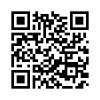MODALITAS Kí–NNEN DALAM KALIMAT BAHASA JERMAN
Downloads
k nnen 'can' in German sentences. The k nnen unit of modality functions to reveal
the speaker's attitude and has the status of a verb modifier. Modality is divided in
function by some linguists into different areas like epistemic modality, modalitymarking
adverb, and deciderative and optative mode devices.
On the basis of the results of a study conducted, it could be concluded that
the modality unit of kí¶nnen 'can' in a sentence in German has the characteristics as
follows: (1) it is merely an attributive element in a verb phrase rather than a core
one so that if deleted the sentence remains grammatical, (2) its relation to any other
element is loose in nature, and (3) its position is so firm that it cannot be permutated
with any other element in a sentence. In addition, in sentences the kí¶nnen modality
varies in meaning according to sentence context. The meaning expressed by the
kí¶nnen modality can be of possibility, ability, or permission.
Keywords: the kí¶nnen modality
Downloads
The authors who publish this journal agree to the following requirements. The author retains the copyright regarding the work being simultaneously licensed below Creative Commons Attribution ShareAlike License.

Jurnal Diksi by Faculty of Languages, Arts, and Culture, Universitas Negeri Yogyakarta is licensed under a Creative Commons Attribution-ShareAlike 4.0 International License.
Based on a work at http://journal.uny.ac.id/index.php/diksi




















